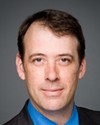Mainly it had to do with baseload, as well as the diffuseness for solar and the diffuseness for wind. It gets down to energy storage, and they are intermittent sources. As everybody knows, the wind doesn't always blow, the sun doesn't always shine. There's a tendency for the wind to be blowing where the people aren't and the sun to be shining where they aren't, but there are some very good exceptions.
As we went through this, and just believed in mathematics and what the experts told us, we came up with the view that wind and solar should be pushed. We also came up with the idea that, via the arithmetic and by what experts themselves told us, perhaps 10% of the needs of people could be met by solar, if you're an advocate, and by wind somewhat more, but it left one quite short.
We then took a look at what people were advocating with regard to coal and the sequestration of C02, and we did not see very viable options there, plus some countries are a bit short on coal.
We moved from that to examination of nuclear concepts, and I won't say we disliked the nuclear, but we saw an opportunity to do considerable improvements over what we had seen used in the last century and the beginning of this century. The United States was doing, for example, innovative work in nuclear, but that pretty much ended in the 1990s. The belief that uranium was not going to be as rare as people thought, other priorities, and Three Mile Island all led to a decline in the basic research in nuclear.
You can argue somewhat about whether it's 10% for solar, or 15%, 18%, or 8%, but all of the discussions we had with the experts came out in that range, despite the fact that the solar constant, of course, multiplied by the surface area of the earth, is a very big number. The practicalities brought us to that conclusion.
It was an interesting experience, as in the initiation of it we had models—




